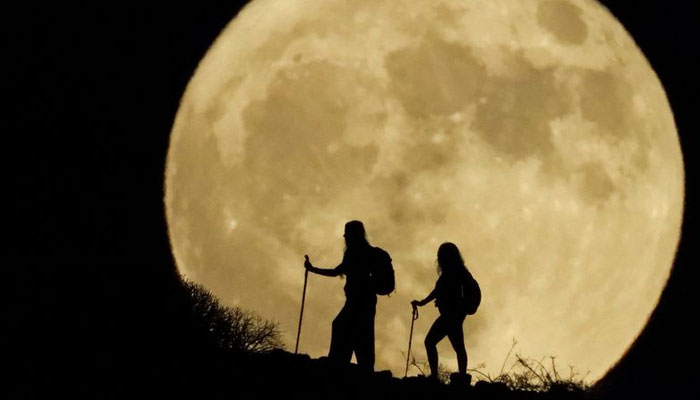When can you see tonight's blue moon? Here's what we know
The term "blue moon" doesn't refer to moon's colour, instead refers to two full moon occurrences in a single month
August 30, 2023

Attention skywatchers! Today, you have a chance to witness a rare celestial event called the "Blue Moon" in your skies which becomes even more fascinating with the occurrence of the supermoon, making the moon appear slightly larger and brighter than usual.
As the moon is in close proximity to the planet Saturn, which people were able to view with the naked eye a few days ago, the event becomes even more exciting.
A supermoon occurs when the full moon's elliptical orbit brings it closer to Earth. At its farthest point, the moon is 405,500 kilometers away, according to Space.com.
The blue moon will reach its peak brightness at 12:00 pm Wednesday (ET), and its zenith will be later at 10:00pm (ET). To witness the full moon, observe it after sunset during dusk hours.
The super blue moon will be visible on August 30 at 8:37 PM EDT.
It will be the largest of the four supermoons that appeared this year, and because it will be 3,57,344 kilometres away from Earth, it will appear larger than usual, The Guardian reported.
Furthermore, it is crucial to remember that the term "blue moon" has nothing to do with the colour of the moon and instead describes the occurrence of two full moons in a single calendar month.
Approximately every 2.7 years, according to Sky & Telescope, a full blue moon appears but since it only seldom occurs when "volcanic eruptions or forest fires send lots of smoke and fine dust into the atmosphere," it will not appear blue.









